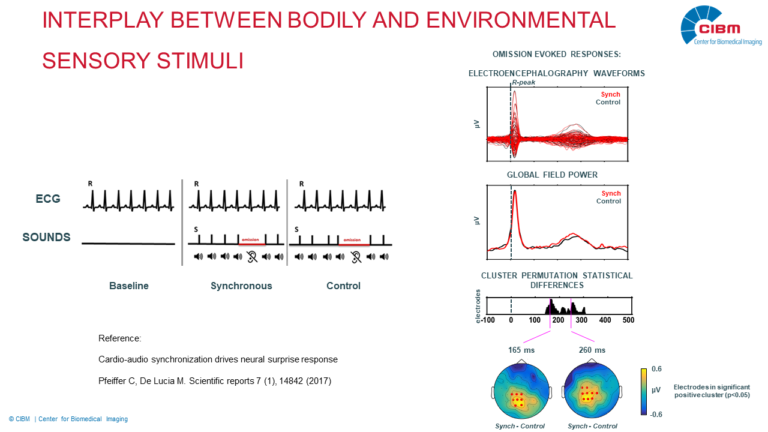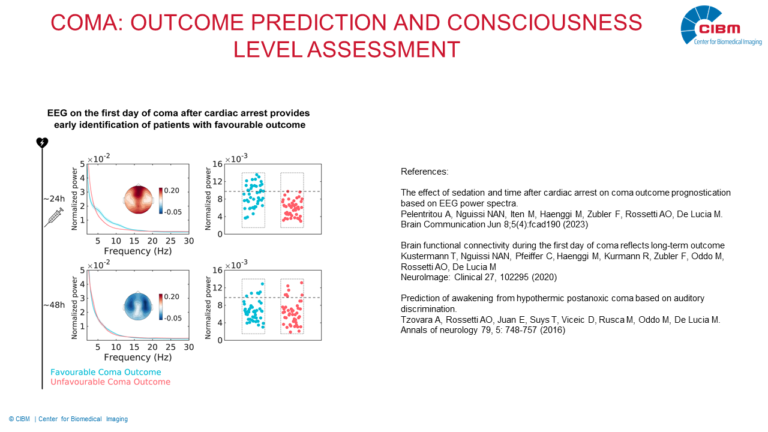Interplay between bodily and environmental sensory stimuli
Description: As the human brain interacts with the environment, it is exposed to a variety of externally generated sensory stimuli. Concurrently, internally generated inputs from the body such as the ongoing heartbeat and respiratory stimuli are continuously monitored for homeostatic and survival purposes. This work aims at investigating how environmental and bodily signals interact as they are processed by the brain, and the effect of this interaction at the behavioral and neural level.
Investigators: Sergi Cuaresma, Giovanni Chiarion, Andria Pelentritou, Marzia De Lucia



